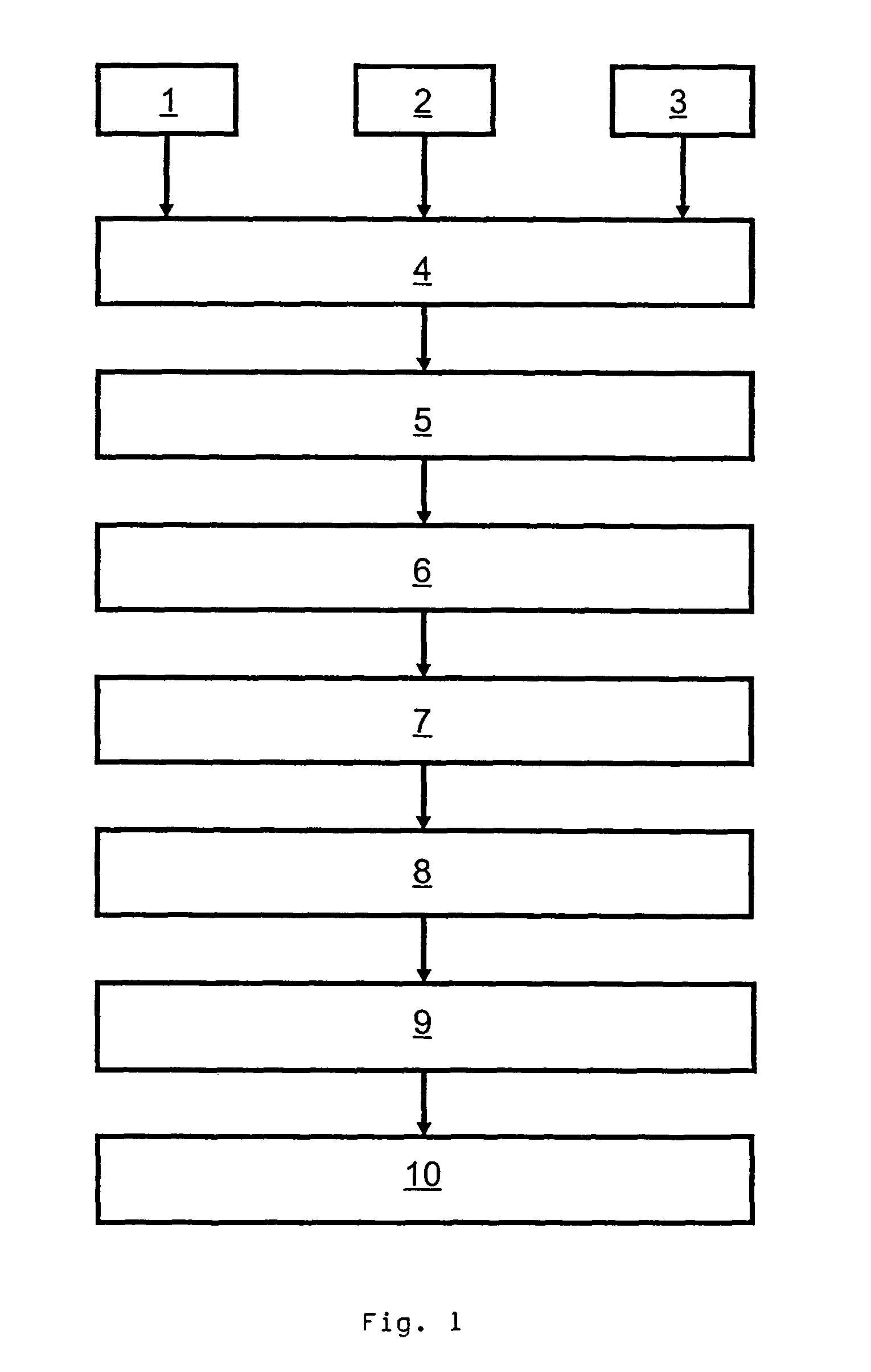Plate-shaped moulding elements based on natural fibres and method for the production thereof
a technology of natural fibres and moulding elements, which is applied in the field of method for producing boardlike molded elements, can solve the problems of high cost of equipment needed to prepare the mixture, difficult production process, and difficult storage, and achieves the effects of reducing production costs, reducing production costs, and reducing production costs
- Summary
- Abstract
- Description
- Claims
- Application Information
AI Technical Summary
Benefits of technology
Problems solved by technology
Method used
Image
Examples
example 1
[0018]By mixing cellulose fibers equipped with flame-retardant materials with polyester / polyolefin-bico fibers, scattering the mixture mechanically, pre-steaming the scattered mat briefly, and then drying it, so that the melting temperature of the fibers is achieved everywhere in the mat, the result after cooling is a flexible insulating panel that possesses half the bulk density and twice the tensile strength of conventional cellulose insulating panels. The ratio of cellulose fibers to bico fibers in the mixture is between 4:1 and 20:1.
PUM
| Property | Measurement | Unit |
|---|---|---|
| density | aaaaa | aaaaa |
| flexible | aaaaa | aaaaa |
| adhesive | aaaaa | aaaaa |
Abstract
Description
Claims
Application Information
 Login to View More
Login to View More - R&D
- Intellectual Property
- Life Sciences
- Materials
- Tech Scout
- Unparalleled Data Quality
- Higher Quality Content
- 60% Fewer Hallucinations
Browse by: Latest US Patents, China's latest patents, Technical Efficacy Thesaurus, Application Domain, Technology Topic, Popular Technical Reports.
© 2025 PatSnap. All rights reserved.Legal|Privacy policy|Modern Slavery Act Transparency Statement|Sitemap|About US| Contact US: help@patsnap.com

